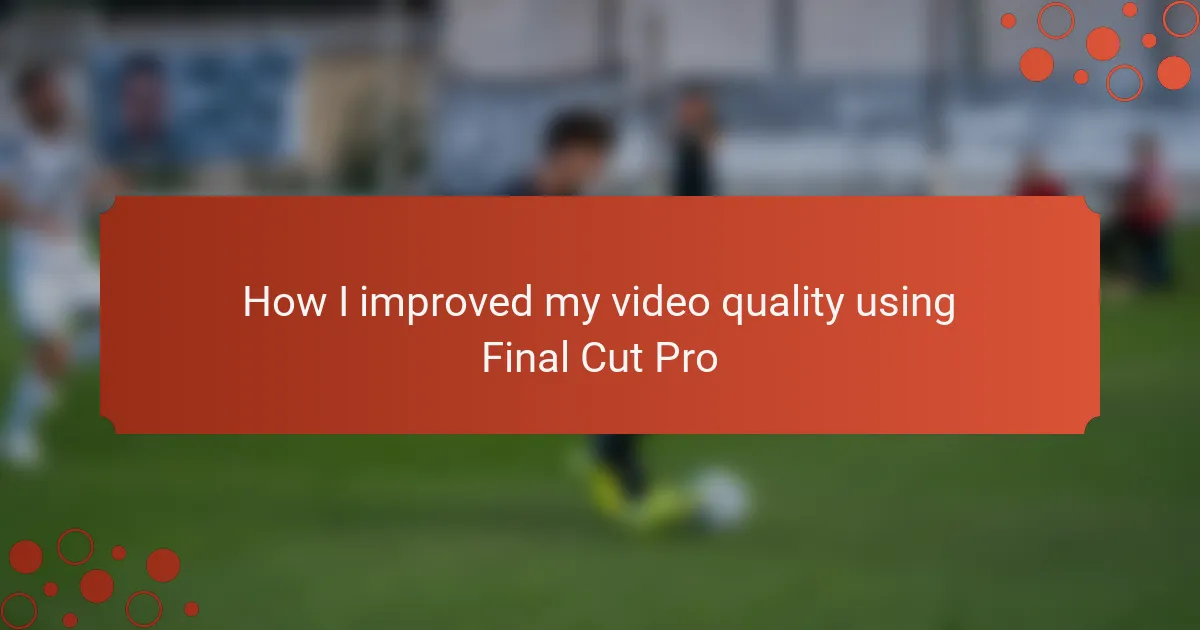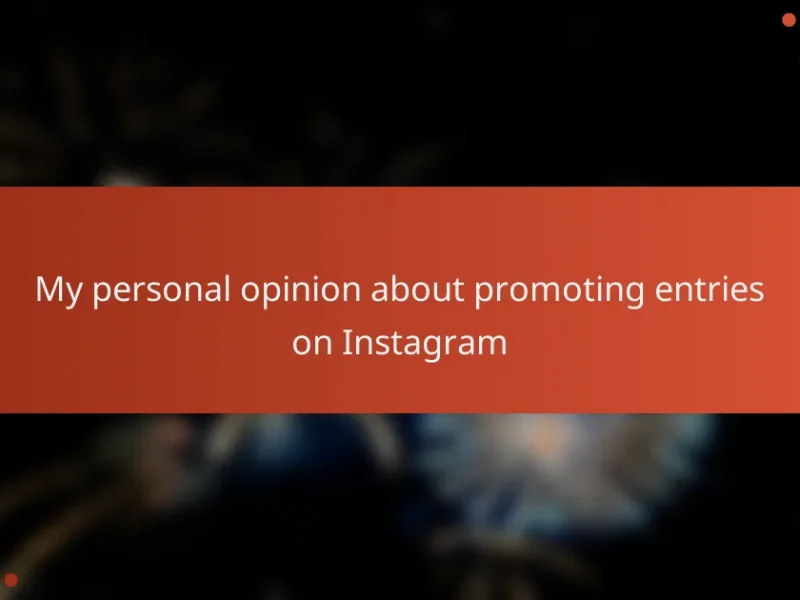Key takeaways
- Video quality hinges on three main factors: resolution, bitrate, and compression, with the right balance being crucial for clarity.
- Organizing footage by resolution and reviewing clips before editing greatly enhances workflow efficiency and saves time.
- Advanced techniques like color grading and noise reduction can significantly elevate the quality and emotional impact of videos.
- Building a streamlined workflow with keyboard shortcuts and regular project backups fosters creativity and confidence during editing.

Understanding Video Quality Basics
Video quality often feels like this mysterious beast—why do some videos look crisp while others appear dull or pixelated? From my experience, it boils down to three main factors: resolution, bitrate, and compression. Understanding these basics transformed how I approached my editing, making my footage pop in ways I hadn’t imagined.
Resolution is something I used to overlook, thinking higher numbers always meant better quality. But I learned that a video’s clarity is tightly linked to how many pixels it contains, and matching this to the viewing platform is key. Have you ever watched a video on your phone that looked way better than the same clip on a big screen? That’s resolution in action.
Bitrate and compression sounded like technical jargon to me at first, but they’re simply about balance. Too much compression and the video gets blocky; too little, and the file size can become unwieldy. I realized tweaking these settings carefully made all the difference in making my final product both beautiful and manageable.

Preparing Footage for Editing
Before diving into Final Cut Pro, I always make it a point to organize my footage meticulously. Sorting clips by resolution and frame rate saved me from the frustration of mixing incompatible files later on. Have you ever tried editing without this step? It’s like starting a puzzle with pieces from different boxes—it just doesn’t fit smoothly.
Another habit I picked up was reviewing each clip for exposure and focus right at the start. Sometimes footage looks fine on the camera screen but reveals flaws once imported. Catching these early helped me decide which clips to enhance or discard, saving hours down the line.
Lastly, I import everything into Final Cut Pro using optimized media whenever possible. Sure, it takes some extra time upfront, but the smoother playback and faster editing felt worth it. This preparation step has become my secret weapon for maintaining quality while speeding up the creative flow.

Advanced Techniques for Video Improvement
When I first started experimenting with color grading in Final Cut Pro, it felt like unlocking a whole new level of video quality. Adjusting shadows, highlights, and midtones allowed me to breathe life into flat footage. Have you ever noticed how a subtle shift in color can completely change the mood of a scene? That’s the magic of advanced color correction.
Another technique that genuinely impressed me was using keyframes to control effects over time. Instead of static edits, I learned to make dynamic adjustments—like gradually sharpening a face or smoothly transitioning exposure during a sunset. It might sound complex, but once I tried it, my videos gained a polish that felt professional and engaging.
I also can’t stress enough how much noise reduction improved my low-light shots. Some clips looked grainy and unusable until I applied this technique. Final Cut Pro’s noise reduction tools helped me salvage footage I almost threw away, which was a real confidence boost. Have you ever grabbed a great shot only to find it too noisy? This method might just save your favorite moments.

Personal Workflow and Tips
One habit that truly transformed my editing workflow in Final Cut Pro was creating custom keyboard shortcuts. At first, it felt like extra work to set them up, but I quickly noticed how much faster I could navigate timelines and apply effects. Have you ever felt slowed down by repetitive clicks? Streamlining these actions gave me more time to focus on creativity rather than fumbling through menus.
I also developed a routine of regularly saving project snapshots throughout the editing process. I can’t tell you how many times this saved me from losing hours of work after a crash or an accidental change. It might seem tedious, but knowing I had a safety net made me feel much more confident experimenting with bold edits.
Finally, I learned to build rough cuts quickly with a focus on story flow before fine-tuning any effects or color grading. This step helped me stay emotionally connected to the video’s message without getting bogged down in technical details too soon. Sometimes, stepping back and concentrating on the narrative pace made polishing the footage feel a lot more purposeful and rewarding.

Results and Lessons Learned
The results I saw after applying these Final Cut Pro techniques were genuinely rewarding. My videos not only looked sharper and more vibrant, but they also felt more polished, which gave me confidence entering contests. Have you ever noticed how small improvements can make your work stand out in a crowded field? That’s exactly what happened for me.
One lesson I learned the hard way is that patience truly pays off. Spending extra time on preparation and fine-tuning might seem tedious, but it prevents headaches later and leads to a smoother editing process. I recall a project where rushing caused a mismatch in resolution that threw off the whole final export—definitely a moment that taught me to slow down and be thorough.
Lastly, I realized that mastering a few key tools in Final Cut Pro is more effective than trying to learn everything at once. Focusing on color grading, noise reduction, and workflow customization brought the biggest leaps in quality. Isn’t it better to excel at a few things than to be overwhelmed by too many options? This targeted approach changed how I work and how my videos resonate with viewers.


